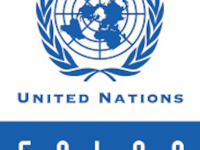Business
RELEASE ODF OECD REVENUE STATISTICS IN LATIN AMERICA & THE CARRIBBEAN 2016
IN SANTIAGO DE CHILE

Parliament Latin America Flag (Source: Courtesy Parliament Latin America )
This year´s report, to be launched during the 28th Regional Seminar on Fiscal Policy organised by the United Nations Economic Commission for Latin America and the Caribbean (ECLAC), looks at tax revenue trends from 1990 to 2014 in 22 Latin American economies. A special chapter analyses trends in revenues from non-renewable natural resources in some Latin American and the Caribbean countries.-------------------------------------------------------------------------------------------------
Pascal Saint- Amans, Director of the OECD Centre for Tax Policy and Administration and Angel Melguizo, head of the Latin America and Caribbean Unit at the OECD Development Centre, will present the report during the 2nd session of the Seminar to take place on 16 March, 2:30 p.m. local time. Other experts participating in the session on “Assessment of recent tax reforms“ moderated by Ricardo Martner, from the ECLAC, include: Sanjeev Gupta, Fiscal Affairs Department, IMF, Rosa María Cañete, Oxfam, Alberto Arenas, ECLAC and Carlos Gomez Sabaini, Buenos Aires University.-----------------------------
Revenue Statistics in Latin America and the Caribbean is a joint publication by the Organisation for Economic Co-operation and Development (OECD) Centre for Tax, Policy and Administration, the OECD Development Centre, the United Nations Economic Commission for Latin America and the Caribbean (ECLAC), the Inter-American Centre of Tax Administrations (CIAT) and the Inter-American Development Bank (IDB). It provides internationally comparable data on tax levels and tax structures in countries of Latin America and the Caribbean.
Oecd Statistics Report Latin America Caribbean Countries Chile Santiago Eclac Tax Policy Rahma Sophia Rachdi
Liability for this article lies with the author, who also holds the copyright. Editorial content from USPA may be quoted on other websites as long as the quote comprises no more than 5% of the entire text, is marked as such and the source is named (via hyperlink).







